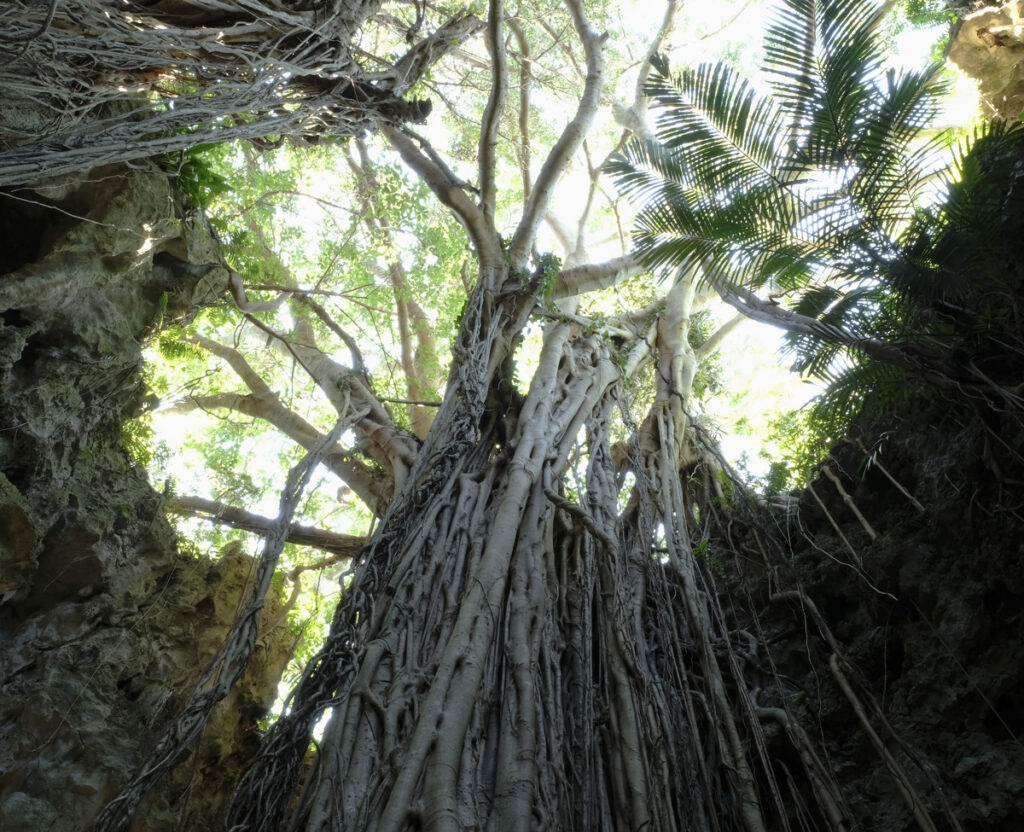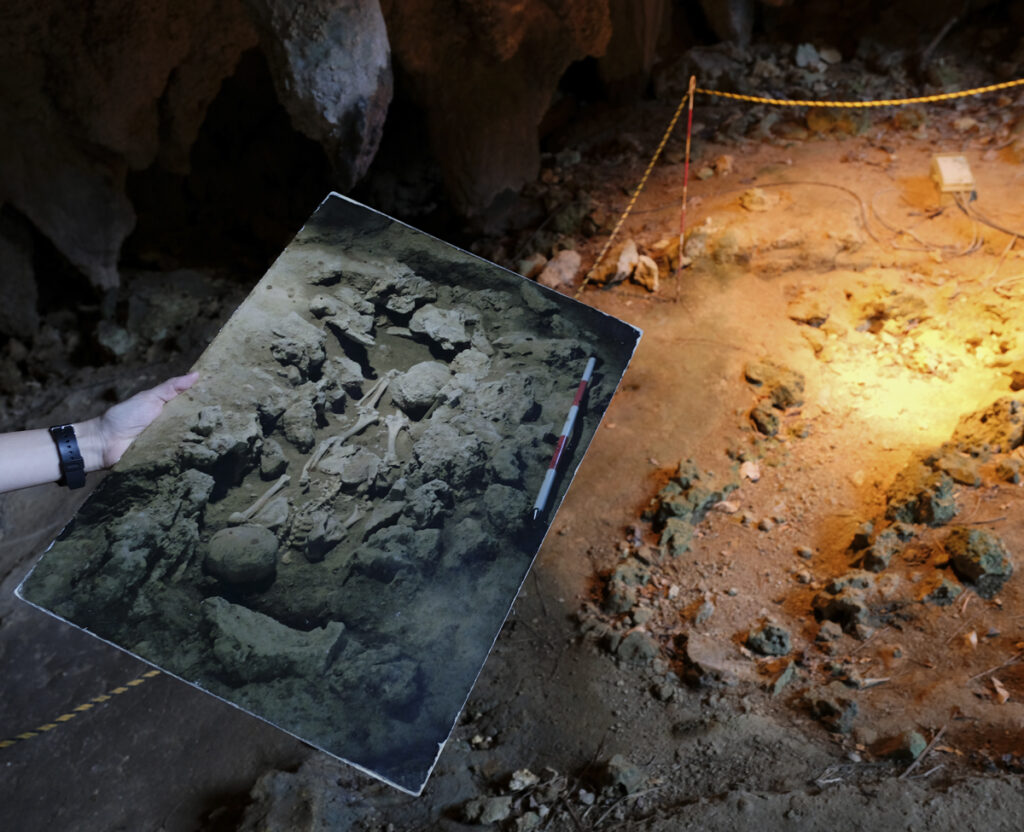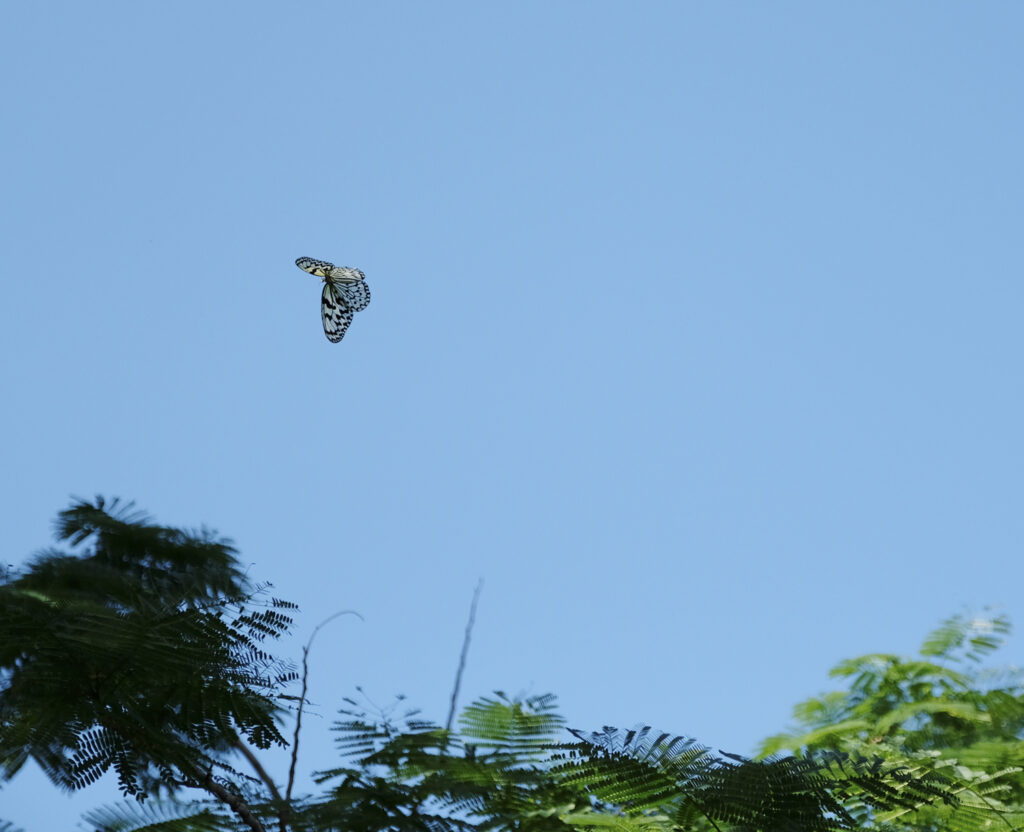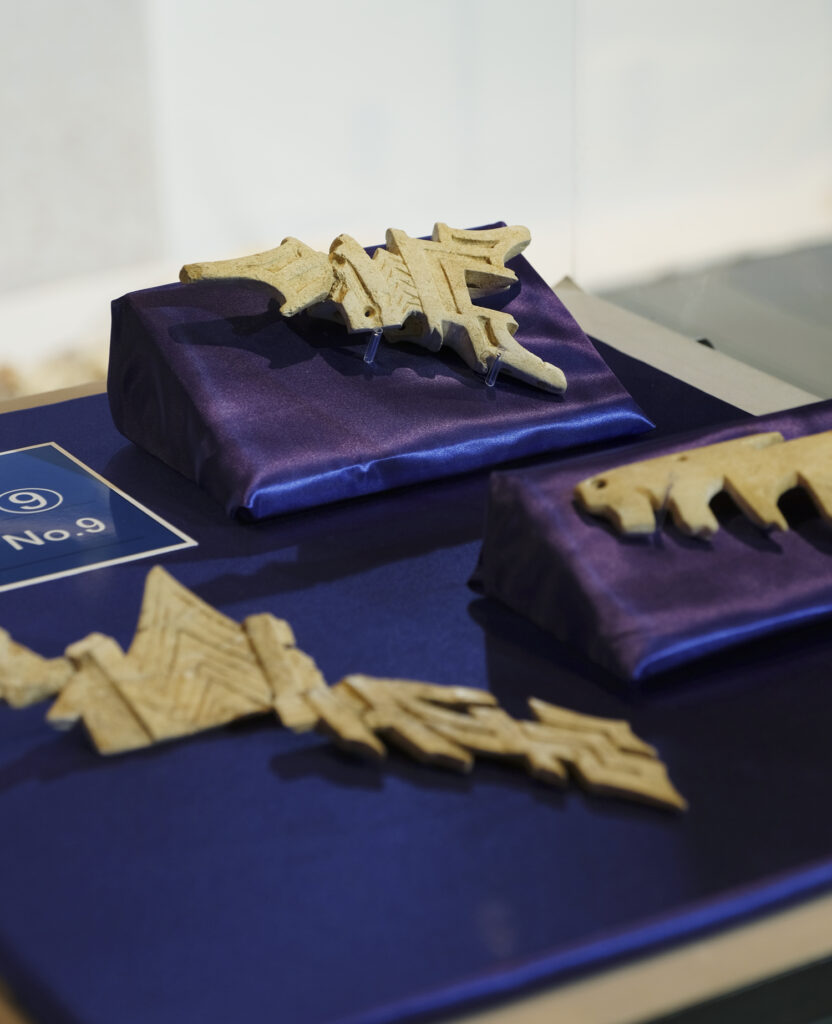Island of Fluttering Butterflies
Thanks to all the buzz surrounding the word Jomon of late, my trip this time was to the Okinawa Prefectural Art Museum to see the special exhibition JOMON: The Symbolism of Flame-shaped Pottery and the Jade Road. For many, the first image that Okinawa brings to mind might be the skeletal remains of the Minatogawa people from the Japanese Paleolithic (over 13,000 years ago). But relics of human life have also been found across Okinawa dating back to the Jomon period that followed (13,000–2,500 years ago), also called the Okinawa Kaizuka, or shell midden, period. One of those finds that I had been curious about from before was butterfly-shaped artifacts. I haven’t seen such a form in any other region. Having heard that a good collection was on display, I trotted off toward the museum.

I peered into the glass display case containing an object made from the jawbone of a dugong, unearthed at the Mashiki-Azamabaru site in Ginowan City and dated to the Late Jomon (4,400–3,200 years ago). Although the lower left section was missing, the artifact clearly depicted a butterfly with its wings spread out. In fact, the design was a faithful reproduction of the structure of the butterfly. I gazed in awe at the exquisite workmanship, and studied every detail, including the thickness, which I hadn’t been able to tell from illustrations. The curator Shinji Yamasaki told me these objects were believed to have been made initially from stone, and then over time, also from bone and shell. Okinawa is part of the larger Rukyu Archipelago (aka the Nansei Islands), stretching from the southern tip of Kyushu to northeastern Taiwan. Try opening a map and following the island chain with your eyes—you can practically picture the people migrating from island to island, bringing their cultures with them. This may be why some of the stones and shells and bones on display had carved patterns resembling those seen on pottery unearthed in the Amami region. It’s amazing how a single design can offer a glimpse of humanity’s journey across the seas.
In the Okinawan dialect, butterfly is called haberu, roughly meaning “seated here.” The word likely describes the butterfly at rest. It may also derive from an Okinawan legend that says butterflies travel between this world and the afterworld, carrying the spirits of the deceased. In the past, the custom of open-air burial was practiced in Okinawa, and butterflies flocked to the body in the process of decomposition… Whether this has any link with the butterfly-shaped artifacts from the Jomon period, however, is unknown, says Mr. Yamasaki.

The next day, I went to the Valley of Gangala, in the city of Nanjo, in southern Okinawa. Hundreds of thousand years ago, the site was a limestone cave. The valley formed when the cave collapsed. Today, guided tours are offered starting at the cave opening housing the Cave Café. I had come here a long time ago for a live concert, but the rain was pouring on that day and all I remember is the cave being dim and damp. This time, I went through the cave and beyond it to the subtropical forest bathed in dazzling sunlight. Farther in, I arrived at the Bugei Cave. Because this limestone cave has openings at the east and the west, the interior was well ventilated, and the ground felt dry and comfortable.
This was the site of discovery of a stone coffin grave dating to the Final Jomon (3,200–2,500 years ago). It contained human bones too. According to the excavation report, the grave was made up of multiple layers in which at least three bodies were buried. By one arm of the body in the upper layer was a shell bracelet, suggesting the deceased was buried with love and care by close relatives.
Outside the cave and back under the sun, I looked up and saw a tree nymph fluttering by. At present, the butterfly is also called the “lady of the southern islands.”

< PAPERSKY no.59(2019)>

Jomon Fieldwork | Nao Tsuda × Lucas B.B. Interview
A conversation between ‘Jomon Fieldwork’ Photographer and writer Nao Tsuda and Papersky’s Editor-in-chief Lucas B.B. The two discuss the ways Jomon culture continues to play an important role in modern day Japan. The video was filmed at Papersky’s office in Shibuya in conjunction with Tsuda’s exhibition “Eyes of the Lake and Mother Mountain Plate” held at the Yatsugatake Museum in Nagano.
Nao Tsuda | Photographer
Through his world travels he has been pointing his lens both into the ancient past and towards the future to translate the story of people and their natural world.
tsudanao.com











